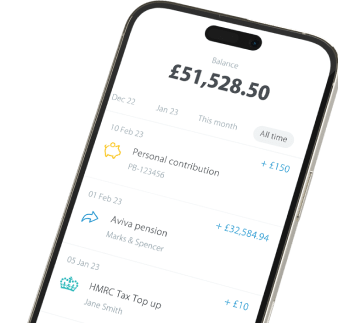Why it’s important to have a pension if you’re self-employed

While the vast majority of employees are paying into a pension, amongst self-employed workers the figure is only 16%. Employers are obliged to automatically enrol their employees into a workplace pension scheme but if you’re self-employed then it’s up to you to set up a self-employed pension.
This means that many self-employed people may struggle to make ends meet in later life, as the maximum State Pension is currently only £230.25 a week (2025/26), and the State Pension age is rising.
Not only is pension saving an important consideration if you’re self-employed, but pensions come with some benefits, including:
- Good pension plans give you low-cost access to professional investment managers who invest your money in a range of assets, which is a sensible way of managing risk.
- If you die before 75, your pension can usually be passed on to your beneficiaries as a lump sum without inheritance tax deductions.
- New pension freedom rules mean that you’ve got more choice over what you do with your pension savings when you reach retirement, including taking up to 25% as a lump sum without paying tax.
Self-employed pension tax relief
In addition to the benefits listed above, you get a generous 25% tax top up from the government on pension contributions. So if you pay in £100, the government effectively adds £25 to your pension.
Do the self-employed get a State Pension?
Yes, if you’ve been paying National Insurance you may accrue State Pension benefits. There are two types of State Pension: the basic State Pension and the new State Pension. You can check your eligibility if you’re unsure.
If you aren’t eligible for State Pension benefits due to insufficient contributions, you could make voluntary contributions to make up for lost years.
While the vast majority of employees are paying into a pension, amongst self-employed workers the figure is only 18%. This means that many self-employed people may struggle to make ends meet in later life, as the maximum State Pension is currently only £230.25 a week (2025/26), and the State Pension age is rising.
Setting up a self-employed pension
If you’re self-employed and setting up a private pension, you may want to start by finding any old workplace and personal pensions so that you can combine them into your new pension plan for easier management.
If you want to move your pensions over to PensionBee, we can combine and transfer your pensions into a new PensionBee plan. Otherwise, you can contact your pension providers to get your pension balances, or try the Pension Tracing Service if you’re struggling to track down your providers.
You can also start a new self-employed pension from scratch by contacting a pension provider. At PensionBee, we’ve made this process really simple. So you can get set up and make your first contribution quickly and easily.
When you’re ready to set up your self-employed pension, you have several options. You can set up either a:
NEST self-employed pension (UK)
The government scheme NEST (National Employment Savings Trust) is another option available to self-employed people.
What is the best pension for the self-employed in the UK?
There’s no best pension for the self-employed, and what fits best will depend upon your individual circumstances. Using a provider such as PensionBee, which lets you make contributions as and when you want can be a good option though, because your income may not be as predictable as you’d like.
State Pension and self-employment
The State Pension can be accessed once you reach retirement age, so long as you’ve at least 10 years of National Insurance contributions to your name (to get the full amount, you’ll need 35 years of NI contributions).
Because of this, it’s important to continue to pay National Insurance contributions when you’re self-employed. Once you reach retirement age, you can claim the State Pension even if you continue to work in self-employment, full or part-time.
How much can the self-employed pay into a pension?
Self-employed pensions are similar to personal pensions. You can only receive tax relief up to a certain amount. Each year your pension has an ‘annual allowance’ for contributions that are eligible for tax relief. Contributions you make over that amount may not be topped up.
It can be possible to contribute your unused annual allowance from the three previous tax years through carry forward. The annual allowance is currently set at £60,000, or 100% of your income if lower than £60,000, in that tax year.
Opening a PensionBee pension
The PensionBee plans are personal pensions that are open to employed and self-employed people. Like all personal pensions, they’re defined contribution pensions, which means the amount you have when you retire depends on the amount paid in and the performance of your investments. PensionBee’s dedicated self-employed pension can be managed online, and you can set up regular contributions or add one-off payments from your BeeHive.

Managing your pension
The PensionBee plans are personal pensions that are open to employed or self-employed people. Like all personal pensions, they’re defined contribution pensions, which means the amount you have when you retire depends on the amount paid in and the performance of your investments.
PensionBee’s pensions for the self-employed have some great benefits:
- they can be managed online or using the secure PensionBee app
- you can set up regular contributions or add one-off payments
- there’s just one all-in annual fee
If you’ve never saved into a pension before, you can start one with PensionBee without having an existing pension.
Risk warning
As always with investments, your capital is at risk. The value of your investment can go down as well as up, and you may get back less than you invest. This information should not be regarded as financial advice.
Last edited: 06-04-2024





